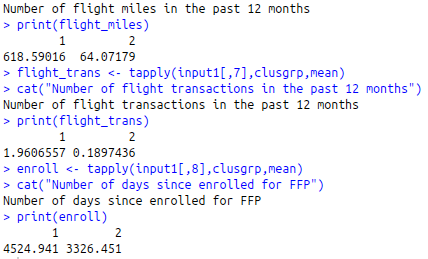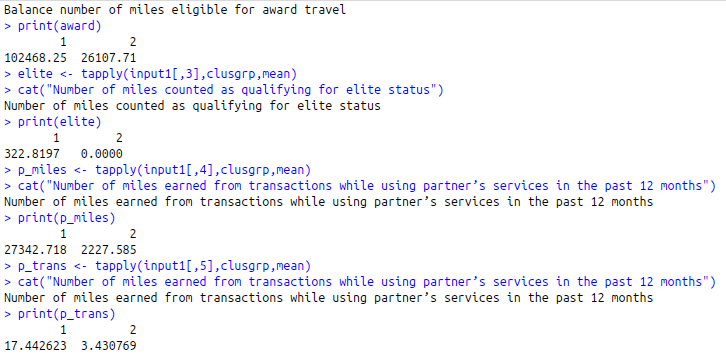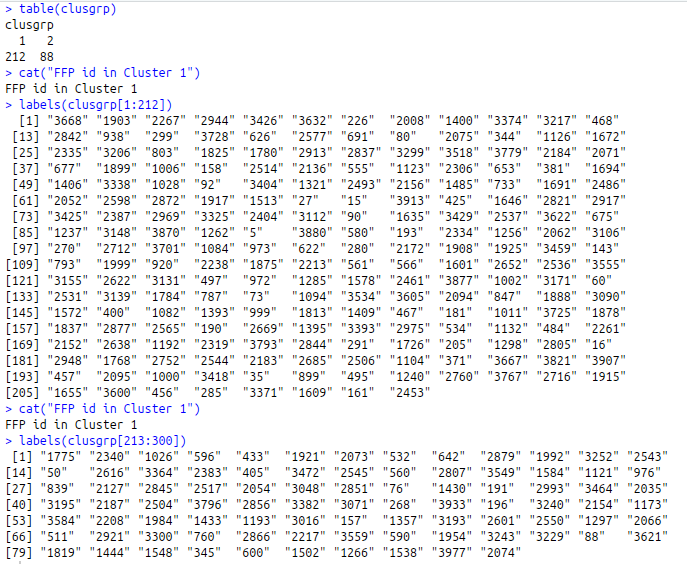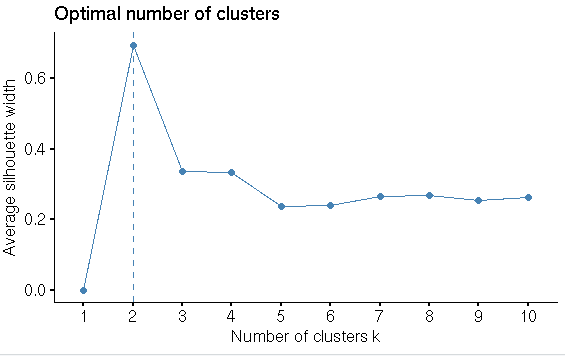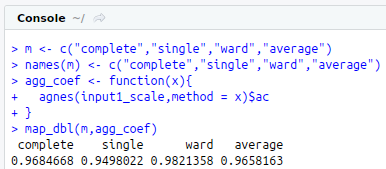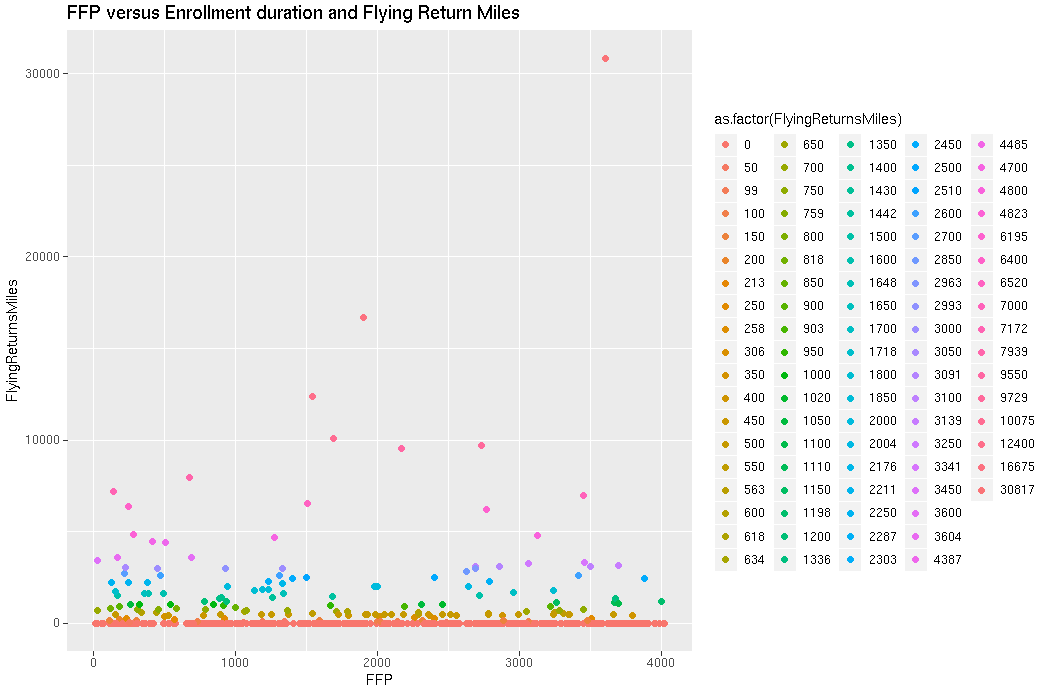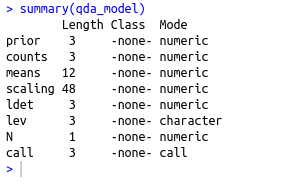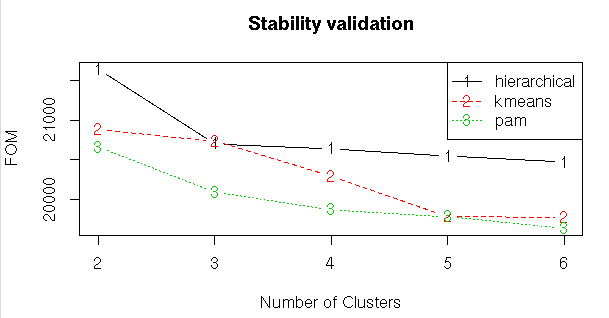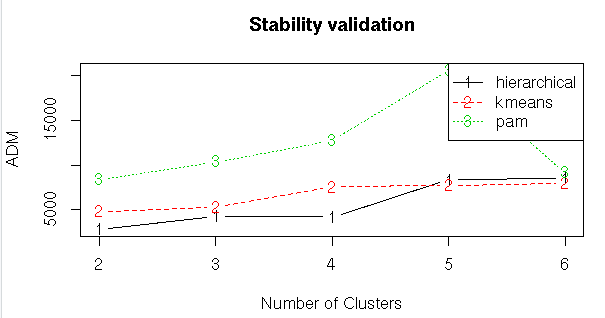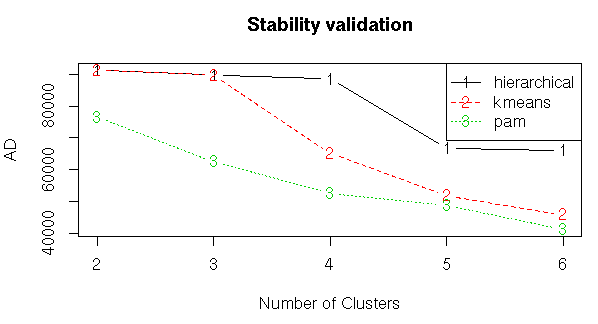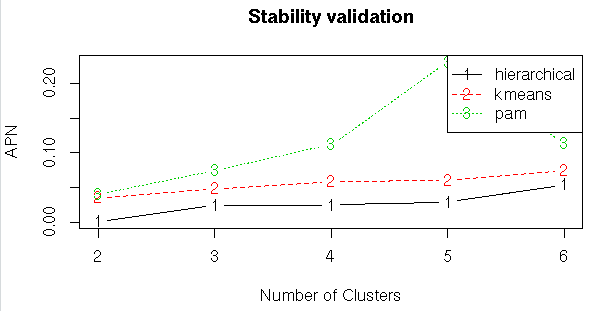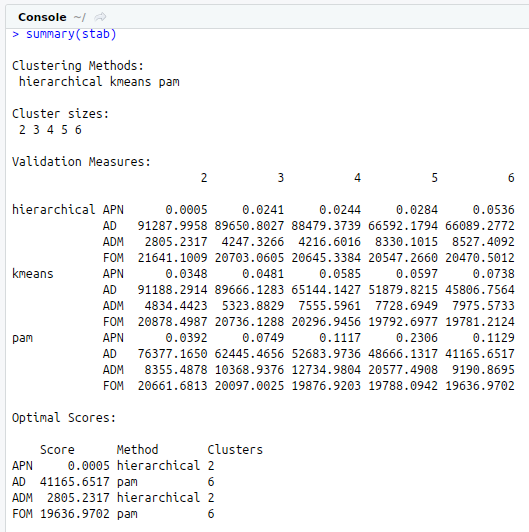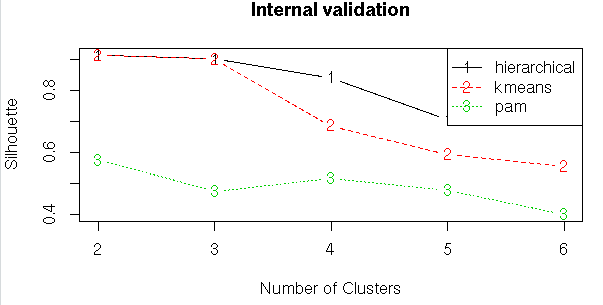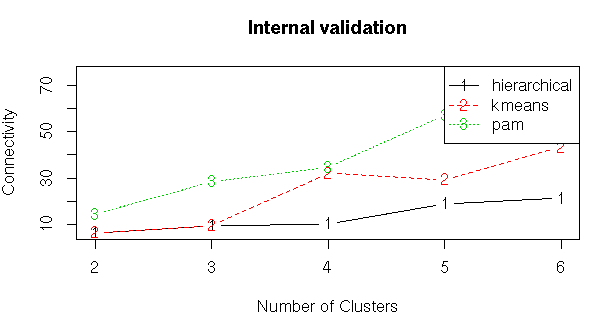To predict the income for the given data set using logistic regression in R.
#Frequent Flyer program
#kmeans clustering
#Loading required pacakges
library(“xlsx”)
library(“openxlsx”) #Big excel file
library(“factoextra”) #Clustering Visualization
library(“dplyr”) # Data manipulation
#Input
input<-read.xlsx(“FlyerSample.xlsx”)
View(input)
str(input)
summary(input)
#Taking sample data
#set.seed(123)
input1<-input[sample(nrow(input),500),]
View(input1)
str(input1)
#Data Preparation
#Checking Missing values
sum(is.na(input))
#Scaling the data
input1_scale<-scale(input1[,-1])
str(input1_scale)
summary(input1_scale)
sd(input1_scale)
View(input1_scale)
#Finding the best Clustering algorithm for our data
#install.packages(“clValid”)
library(clValid)
#Internal Validation Measures
#Compute clValid
clmethods<-c(“hierarchical”,”kmeans”,”pam”)
intern<-clValid(input1, nClust = 2:6,
clMethods = clmethods, validation = “internal”)
# Summary
summary(intern)
#Ploting the summary
plot(intern)
#Stability Validation Measures
stab<-clValid(input1,nClust=2:6,clMethods = clmethods,validation = “stability”)
#Summary
summary(stab)
#Plotting the summary
plot(stab)
#Histogram of Flying Trans miles
library(“ggplot2”)
library(“ggpubr”)
ggplot(input1,aes(FlyingReturnsMiles),binwidth=50) + geom_histogram(fill= 678,boundary=150) + theme_pubclean() + ggtitle(“Number of flight miles in the past 12 months”)
#FFP versus Enrollment duration and Flying Return Miles
ggplot(input1, aes(x=FFP,y=FlyingReturnsMiles,color=as.factor(FlyingReturnsMiles))) + geom_point() +
labs(title=”FFP versus Enrollment duration and Flying Return Miles”)
#Hierarchical Clustering
#Finding the more appropriate method for more strongest clustering structure
#install.packages(“purrr”)
library(“purrr”)
m<-c(“complete”,”single”,”ward”,”average”)
names(m)<-c(“complete”,”single”,”ward”,”average”)
agg_coef<-function(x){
agnes(input1_scale,method = x)$ac
}
map_dbl(m,agg_coef)
#Compute hclust
h_dist<-dist(input1_scale,method = “euclidean”)
h_data<-hclust(h_dist, method = “ward.D”)
#Plotting Dendrogram
#install.packages(“ggdendro”)
library(“ggdendro”)
dend <-as.dendrogram(h_data) dend %>% set(“branches_k_color”,value=c(“blue”,”green”),k=2) %>% plot(main=”Cluster 1 Dendrogram”,xlim=c(90,140))
rect.hclust(h_data,k=2)
dend %>% set(“branches_k_color”,value=c(“blue”,”green”),k=2) %>% plot(main=”Cluster 2 Dendrogram”,xlim=c(1,88))
rect.hclust(h_data,k=2)
#Finding the optimal No of clusters
library(“factoextra”)
fviz_nbclust(input1_scale,hcut,method = “silhouette”)
clusgrp<-cutree(h_data,k=2)
table(clusgrp)
cat(“FFP id in Cluster 1”)
labels(clusgrp[1:212])
cat(“FFP id in Cluster 1”)
labels(clusgrp[213:300])
award<-tapply(input1[,2], clusgrp, mean)
cat(“Balance number of miles eligible for award travel\n”)
print(award)
elite<-tapply(input1[,3],clusgrp,mean)
cat(“Number of miles counted as qualifying for elite status”)
print(elite)
p_miles<-tapply(input1[,4],clusgrp,mean)
cat(“Number of miles earned from transactions while using partner’s services in the past 12 months”)
print(p_miles)
p_trans<-tapply(input1[,5],clusgrp,mean)
cat(“Number of miles earned from transactions while using partner’s services in the past 12 months”)
print(p_trans)
flight_miles<-tapply(input1[,6],clusgrp,mean)
cat(“Number of flight miles in the past 12 months”)
print(flight_miles)
flight_trans<-tapply(input1[,7],clusgrp,mean)
cat(“Number of flight transactions in the past 12 months”)
print(flight_trans)
enroll<-tapply(input1[,8],clusgrp,mean)
cat(“Number of days since enrolled for FFP”)
print(enroll)
